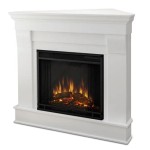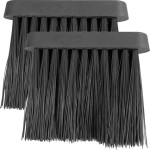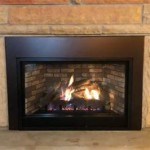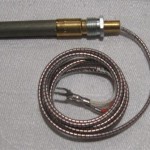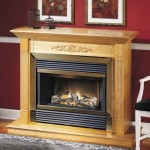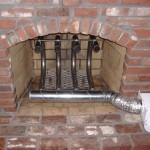Bookshelves for Next to Fireplace: A Guide
The placement of bookshelves next to a fireplace presents a complex design challenge, balancing aesthetics, functionality, and safety. Careful consideration must be given to the materials, dimensions, and style of the bookshelves to ensure they complement the fireplace and the overall room decor, while also protecting the books from heat and potential damage. The proximity to a heat source necessitates a strategic approach to avoid warping, fading, and other detrimental effects. This article provides a comprehensive guide to selecting and positioning bookshelves in close proximity to a fireplace.
The primary consideration when placing bookshelves next to a fireplace is safety. Fireplaces, whether wood-burning, gas, or electric, generate heat, and prolonged exposure to this heat can damage books and the bookshelves themselves. Before installing any shelving, it is essential to determine the heat output of the fireplace and the distance at which the bookshelves can be safely placed. This involves measuring the temperature at various distances from the fireplace when it is in operation. Consider consulting with a professional fireplace installer or HVAC technician for accurate assessment and recommendations.
The choice of materials for the bookshelves is crucial. Solid wood, while aesthetically pleasing, is susceptible to warping and cracking under heat. Engineered wood products, such as MDF (Medium-Density Fiberboard), can be more resistant to warping but are sensitive to moisture. Metal bookshelves offer excellent heat resistance but may not fit the desired aesthetic. A hybrid approach, such as using metal framing with wooden shelves, can provide a balance of durability and visual appeal. Proper sealing and finishing of wood materials are also essential to protect them from heat and moisture. The type of finish used can significantly impact heat resistance. Consider heat-resistant paints or varnishes specifically designed for use near heat sources.
Key Point 1: Material Selection for Heat Resistance
Selecting the appropriate materials for bookshelves near a fireplace is paramount to their longevity and the preservation of the books stored within. Solid wood, while visually appealing, is often the least suitable option due to its susceptibility to warping and cracking in response to fluctuating temperatures and humidity levels. Hardwoods, such as oak and maple, are generally more stable than softwoods, like pine, but even they require careful treatment and protection. Engineered wood products, such as MDF or plywood, can offer greater dimensional stability compared to solid wood, but their vulnerability to moisture absorption must be addressed with proper sealing and finishing.
Metal, particularly steel or wrought iron, provides excellent heat resistance and structural integrity. However, metal bookshelves may not align with all interior design styles. A potential solution involves combining metal framing with wood shelves, providing a robust and heat-resistant foundation while maintaining a more traditional aesthetic. When using wood shelves with metal frames, ensure adequate ventilation to dissipate heat and prevent moisture buildup. Furthermore, consider the finish of the metal. Powder coating provides a durable and heat-resistant finish compared to paint, which can chip and peel under prolonged exposure to heat.
Another often overlooked material is tempered glass. While not suitable for load-bearing components, tempered glass shelves can be incorporated into bookshelf designs to add visual interest and reflect light. Tempered glass is more resistant to heat than standard glass and will not shatter as easily. However, it is important to consider the overall weight capacity of the bookshelf structure and distribute the weight evenly across all shelves. Ultimately, the optimal material selection will depend on the specific fireplace type, the distance of the bookshelves from the heat source, the desired aesthetic, and the overall budget.
Key Point 2: Design Considerations for Heat Mitigation
The design of the bookshelves themselves can play a significant role in mitigating the effects of heat emanating from the fireplace. Closed-back bookshelves, for example, can trap heat and moisture, leading to accelerated deterioration of both the books and the shelving. Open-back bookshelves, on the other hand, allow for better airflow and heat dissipation. This design feature is particularly important when using wood materials that are susceptible to warping. The distance between shelves is also crucial. Tightly packed shelves restrict airflow, potentially trapping heat and creating a microclimate that favors mold and mildew growth. Adequate spacing between shelves promotes ventilation and reduces the risk of heat buildup.
Consider incorporating design elements that deflect heat away from the books. Installing a heat shield behind the bookshelves, made of a reflective material such as aluminum or stainless steel, can help to redirect radiant heat away from the books and the bookshelves themselves. The heat shield should be properly ventilated to prevent heat from accumulating behind it. Furthermore, consider the placement of the bookshelves relative to the fireplace flue or chimney. Avoid positioning the bookshelves directly in the path of rising hot air, as this will significantly increase the risk of heat damage. Shelves can be spaced apart as well, creating more ventilation for the books.
The depth of the bookshelves also matters. Shallower shelves allow for better airflow around the books, reducing the risk of heat buildup. Avoid deep shelves that can create pockets of stagnant air and trap heat. Furthermore, consider adding decorative elements, such as corbels or moldings, that can create air gaps and promote ventilation. Finally, regular maintenance is essential. Periodically dusting the bookshelves and books helps to improve airflow and prevent the accumulation of dust, which can act as an insulator and trap heat. Inspect the bookshelves regularly for signs of warping, cracking, or other damage, and address any issues promptly.
Key Point 3: Book Preservation Strategies
Beyond the selection and design of the bookshelves, specific strategies can be employed to protect the books themselves from heat damage. The most obvious approach is to avoid placing valuable or irreplaceable books on shelves closest to the fireplace. These books should be stored in a more climate-controlled environment, away from direct heat and sunlight. For books that must be stored near the fireplace, consider using archival-quality book covers or sleeves to protect them from dust, dirt, and heat. These covers can provide an extra layer of insulation and protect the books from fading and damage.
Regularly rotating the books on the shelves can also help to minimize the effects of heat exposure. By rotating the books, you can ensure that no single book is exposed to the heat for an extended period. This can help to prevent uneven fading and warping. Furthermore, consider using bookends to support the books and prevent them from leaning or falling over. Bookends can also help to improve airflow around the books and reduce the risk of heat buildup. Silica gel packets can also prevent too much moisture from getting trapped within the pages of the books.
Monitoring the humidity levels in the room is crucial. Low humidity can cause the pages of books to become brittle and crack, while high humidity can promote mold and mildew growth. Using a humidifier or dehumidifier to maintain a stable humidity level can help to protect the books from both extremes. Finally, consider the type of books being stored near the fireplace. Books with delicate bindings or fragile paper should be given extra protection. Leather-bound books, for example, are particularly susceptible to heat damage and should be stored away from direct heat sources. Implementing these book preservation strategies, in conjunction with careful material selection and thoughtful design, can help to ensure the longevity and preservation of books stored near a fireplace.

White Built In Bookshelves Around The Fireplace Green With Decor

Best Built In Bookshelves Around A Fireplace Design Ideas

Built Ins Next To Fireplace Design Ideas

Bookshelves Around Fireplace Design Ideas

White Built In Bookshelves Around The Fireplace Green With Decor

Gorgeous Office Bookshelves With A Built In Electric Fireplace Twelve On Main

ᑕ❶ᑐ Fireplace Bookshelves Design Has Shiplap Set Sail

What Type Of Bookshelves Beside Fireplace

Diy Built In Bookshelves From Billy Bookcases With Fireplace Thrifty And Chic

Reader Question How Can I Build Symmetrical Bookcases Around This Fireplace Addicted 2 Decorating
Related Posts

